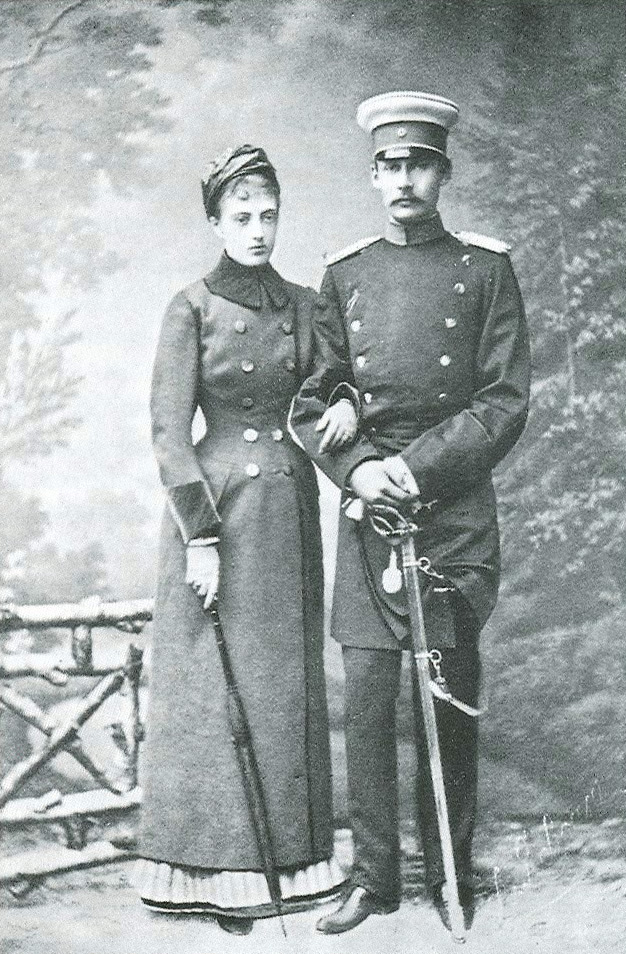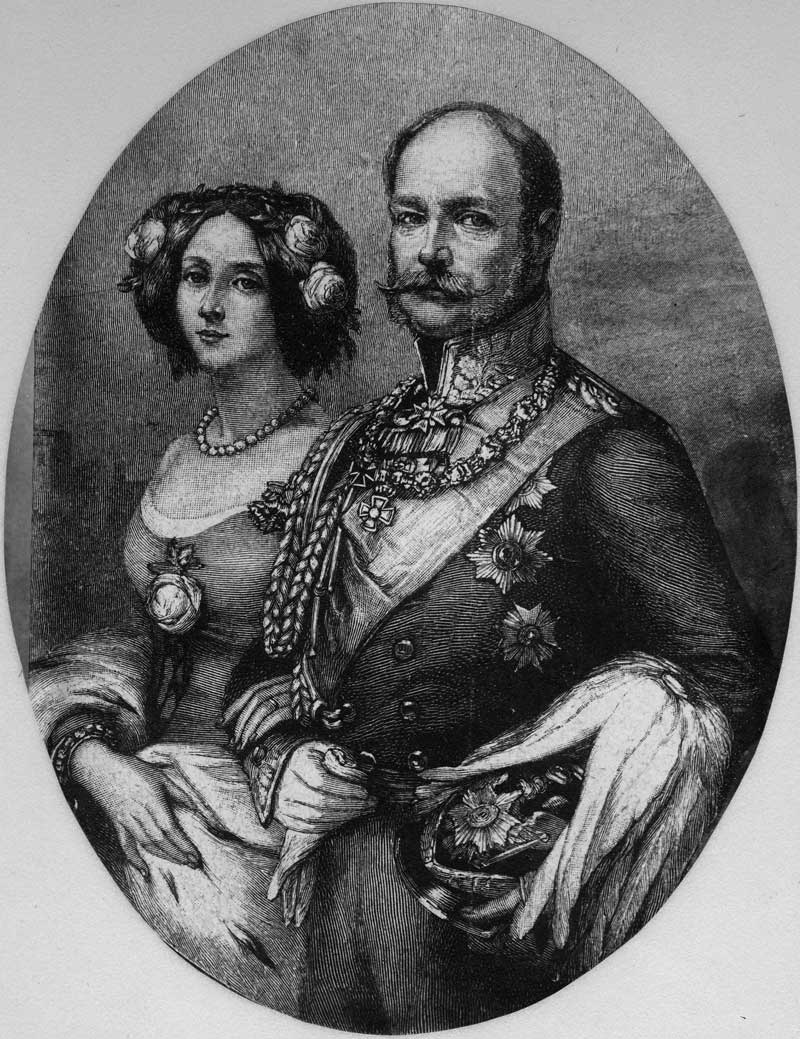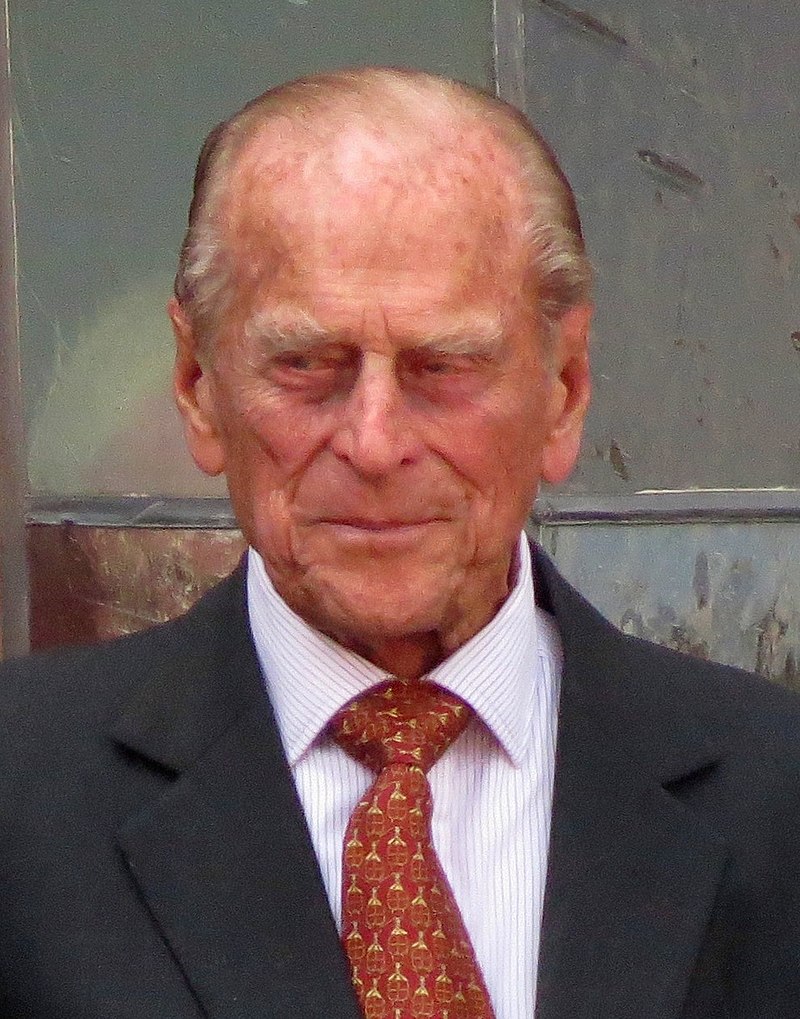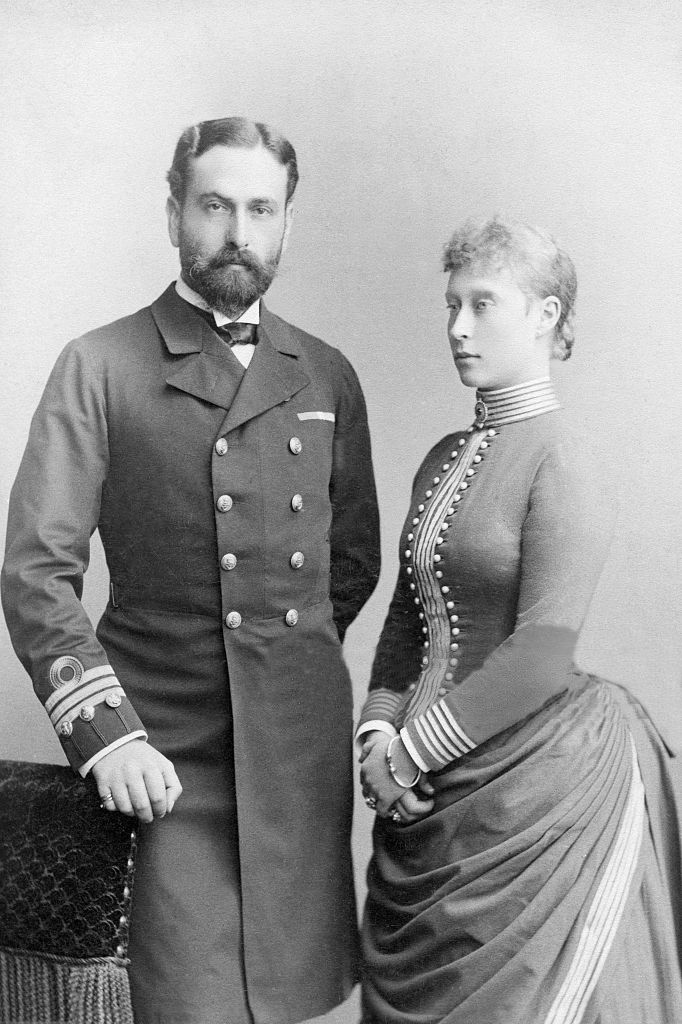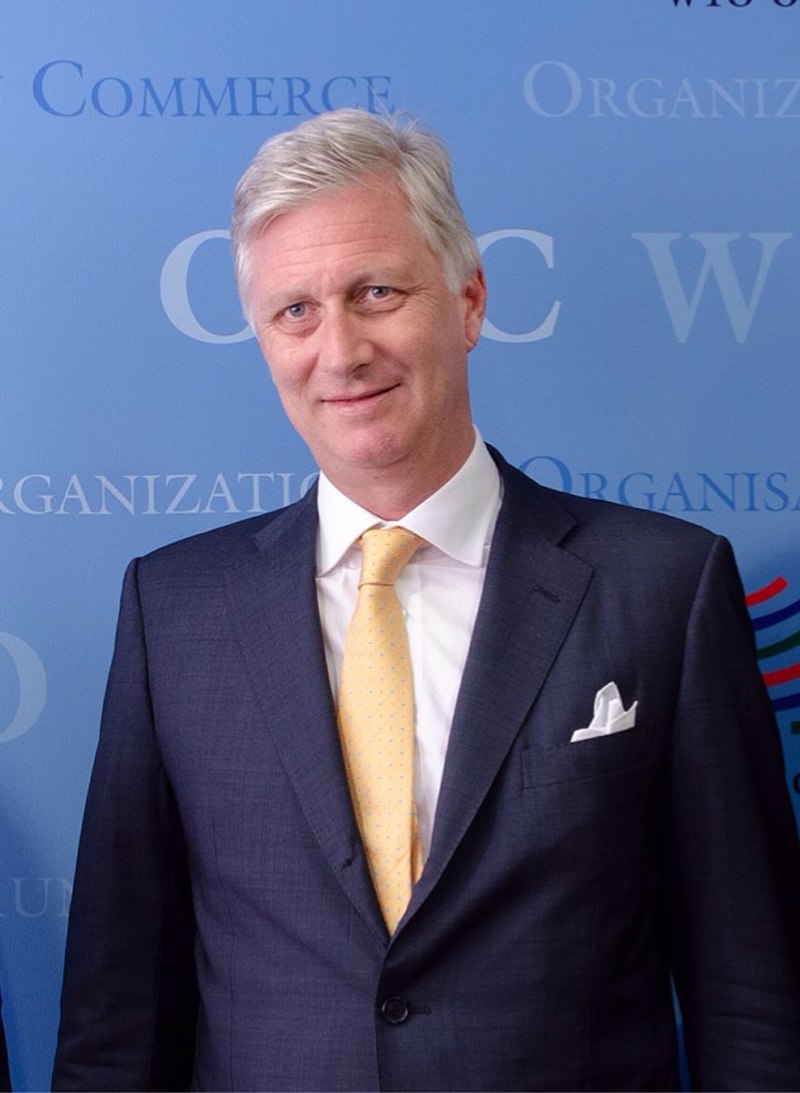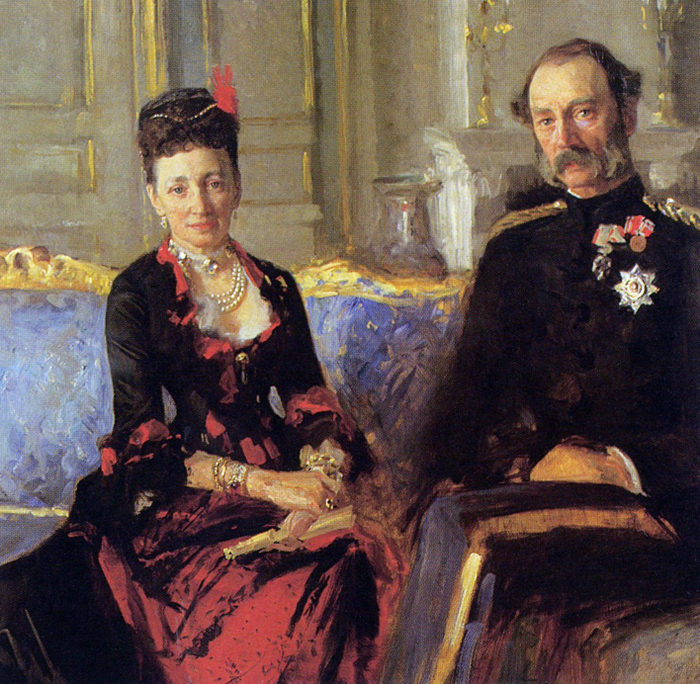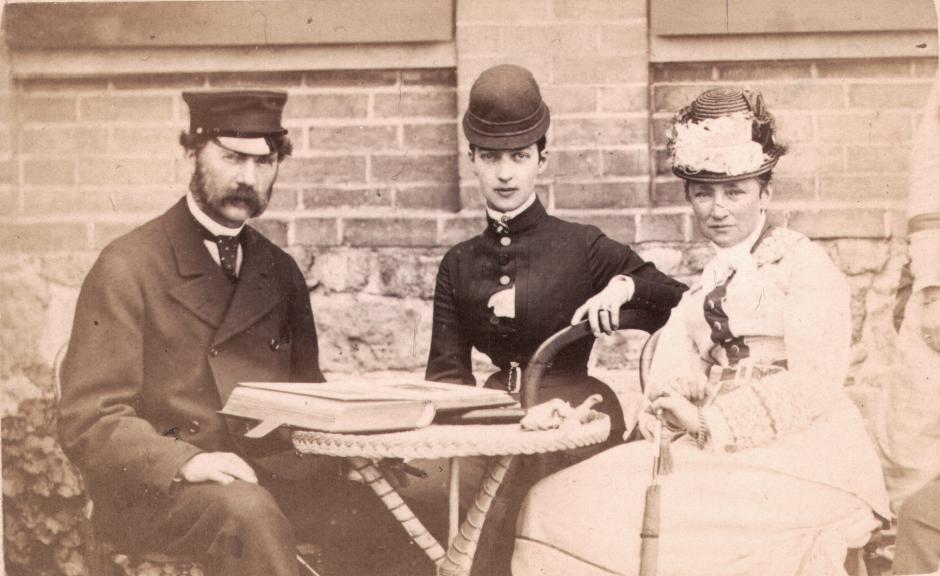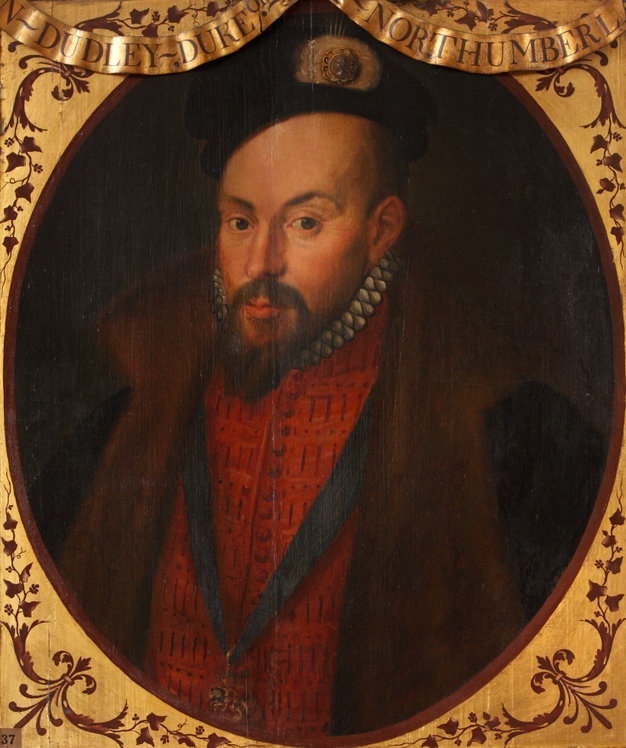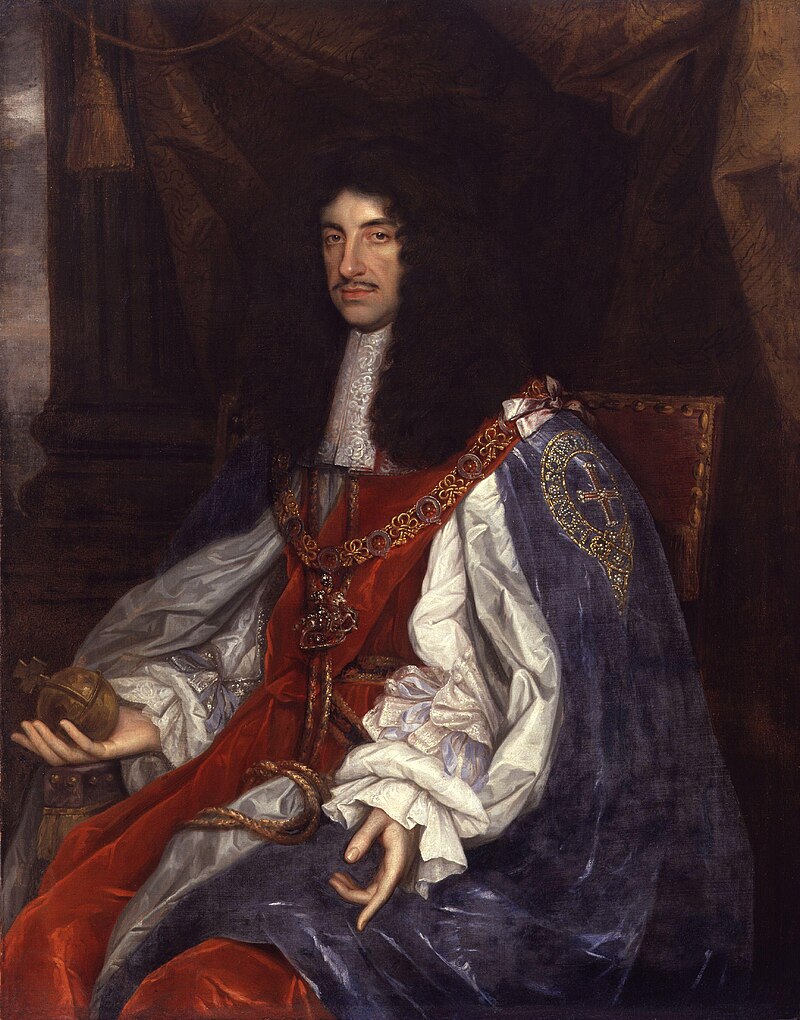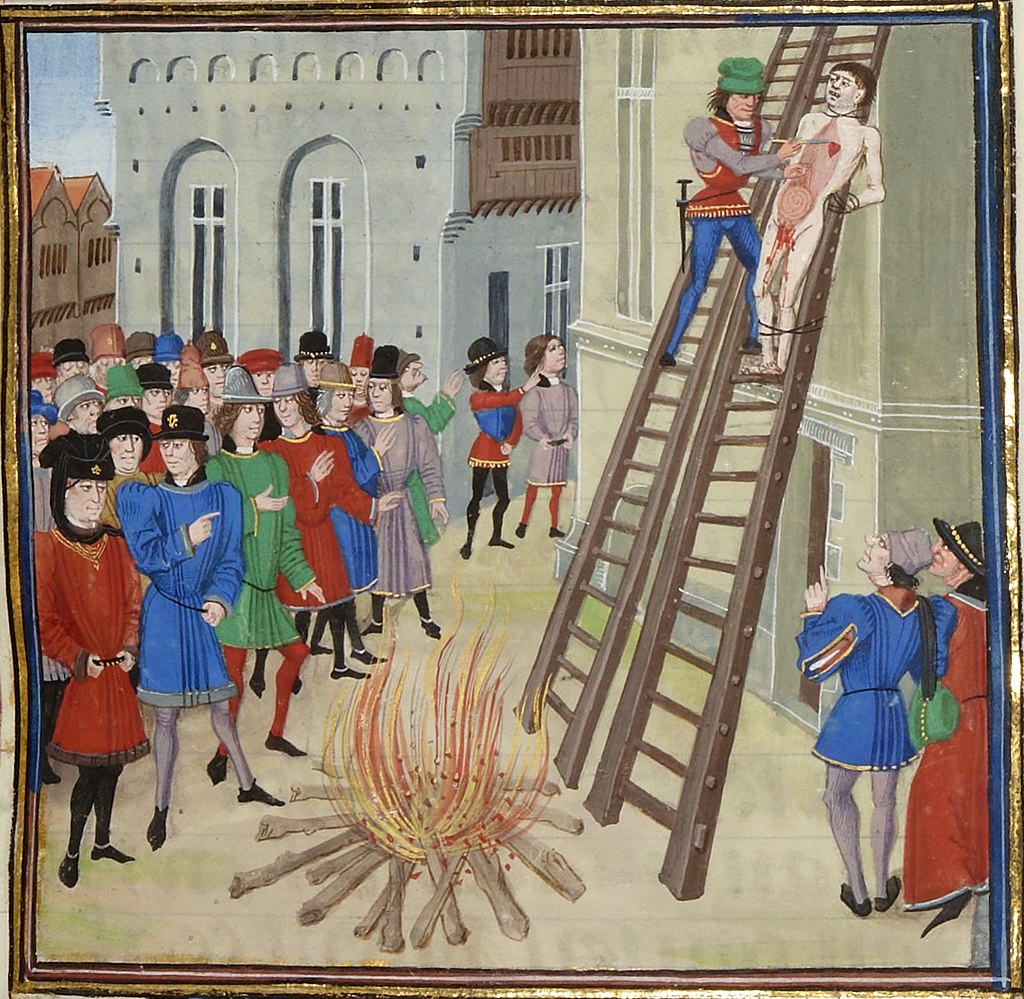by Susan Flantzer
© Unofficial Royalty 2021

Sarah Churchill, circa 1700; Credit – Wikipedia
Favorite: a person treated with special or undue favor by a king, queen, or another royal person
Sarah Churchill, Duchess of Marlborough, the wife of John Churchill, 1st Duke of Marlborough was born Sarah Jennings on June 5, 1660, probably at Holywell House in St. Albans, Hertfordshire, England. Sarah was the youngest of the eight children of Richard Jennings (circa 1619 – 1668), a Member of Parliament, and Frances Thornhurst (1628 – 1693), daughter and heiress of Sir Gifford Thornhurst, 1st Baronet and Susanna Temple.
Sarah had seven siblings:
In 1663, during negotiations for the recovery of an estate in Kent that had been the property of his mother-in-law, Sarah’s father Richard Jennings came into contact with James, Duke of York, the future King James II of England, the brother of King Charles II of England. Favorably impressed with Jennings, James appointed his eldest surviving daughter Frances a maid of honor to his first wife, Anne Hyde, Duchess of York. Although Frances had to give up her post as maid of honor when she married, James did not forget the Jennings family, and in 1673, 13-year-old Sarah was appointed a maid of honor to James’ second wife Maria Beatrice of Modena.

Mary and Anne with their parents James, Duke of York (later King James II) and Duchess of York (born Anne Hyde) by Peter Lely, circa16681670; Credit – Wikipedia
Also at court were the two surviving children from James’ first marriage to Anne Hyde, Mary (the future Queen Mary II who was two years younger than Sarah) and Anne (the future Queen Anne who was five years younger than Sarah). Sarah first became acquainted with the royal sisters in 1671 but became closer friends with Anne after she was appointed maid of honor to Anne’s stepmother. Sarah later claimed that their five-year age difference did not discourage Anne and Sarah from playing together and that even then Anne expressed “a particular fondness” for her. Sarah would remain an intimate of Anne until 1711 when Sarah and her husband John Churchill, 1st Duke of Marlborough were dismissed from court.
In late 1675, 15-year-old Sarah met 25-year-old John Churchill, an upcoming military leader who fell in love with her. In 1663, John Churchill’s fifteen-year-old sister Arabella Churchill had been sent to court to be a maid of honor to Anne Hyde, Duchess of York. Arabella captured the eye of James, Duke of York (the future King James II) and by 1665, she was his mistress. The Churchill family was firmly loyal to the royal household, and their feeling about Arabella’s position as a royal mistress seems to have been “a joyful surprise that so plain a girl had attained such high preferment.”

John Churchill circa 1685–1690; Credit – Wikipedia
John Churchill, who had previously been a lover of King Charles II’s mistress Barbara Palmer, Duchess of Cleveland, had little to offer financially as his family’s estates were deeply in debt. John’s father Sir Winston Churchill was anxious to restore the family’s fortune. In 1677, Catherine Sedley, because of her family’s wealth, was considered a marriage prospect for John Churchill by his parents. John hoped to marry Catherine Sedley and then take Sarah as a mistress in place of Barbara Palmer, Duchess of Cleveland, who had recently departed for France. However, surviving letters from Sarah to John show her unwillingness to become his mistress. Catherine Sedley later became a mistress of the future King James II and bore him three children.
After the death of her surviving brother Ralph in 1677 and then the death of her sister Barbara in 1678, Sarah and her elder sister Frances became co-heirs of the Jennings estates in Hertfordshire and Kent, and Sarah’s financial situation improved. John decided he would marry Sarah but both their families disapproved of the marriage. Sometime during the winter of 1677 – 1678, Sarah Jennings and John Churchill secretly married. Their marriage was announced only to Maria Beatrice of Modena, then Duchess of York, and a small circle of friends so that Sarah could keep her court position as Maria Beatrice’s maid of honor. When Sarah became pregnant, their marriage was announced publicly on October 1, 1678, and she retired from the court to give birth to her first child Harriet who died in infancy.
Sarah and her husband John had seven children. Their children and grandchildren married into the British aristocracy. Among their more famous descendants are British Prime Minister Sir Winston Churchill and Diana, Princess of Wales, and of course her son William, a future King of the United Kingdom.
- Harriet Churchill (born and died 1679), died in infancy
- Henrietta Churchill, 2nd Duchess of Marlborough in her own right (1681 – 1733), married Francis Godolphin, 2nd Earl of Godolphin, had two sons and three daughters
- Anne Churchill (1683 – 1716), married Charles Spencer, 3rd Earl of Sunderland, had three sons and two daughters, their son Charles became 3rd Duke of Marlborough upon the death of his aunt Henrietta Churchill, 2nd Duchess of Marlborough; their son John is the ancestor of the Earls Spencer and therefore of Diana, Princess of Wales
- John Churchill, Marquess of Blandford (1686 – 1703), died of smallpox at age 17, the dukedom passed to his eldest sister Henrietta after their father died in 1722
- Elizabeth Churchill (1687 – 1714), married Scroop Egerton, 4th Earl of Bridgewater, had one son and one daughter
- Mary Churchill (1689 – 1751), married John Montagu, 2nd Duke of Montagu, had three sons and two daughters
- Charles Churchill (1690 – 1692), died in infancy
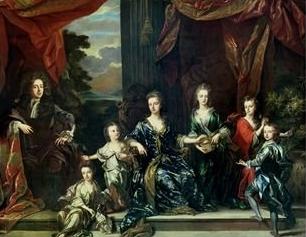
Sarah and John’s family circa 1694: John, Elizabeth, Mary, Sarah, Henrietta, Anne, and their son John; Credit – Wikipedia
When Sarah’s third daughter was born in February 1683, Anne accepted an invitation to be her godmother, and the child was named after Anne. Later in 1683, when Anne married Prince George of Denmark, Sarah was appointed a Lady of the Bedchamber. It was during the 1680s that Anne and Sarah became quite close and Anne was quite upset during the periods Sarah was not at court. While they were apart, they wrote to each other, eventually using the pen names Mrs. Morley (Anne) and Mrs. Freeman (Sarah). The question of whether Anne was sexually attracted to Sarah is often raised. While there have been rumors of sexual relationships, as depicted in the 2018 film The Favourite, between both Queen Anne and Sarah, and Queen Anne and Abigail Masham, Sarah’s first cousin and her replacement as Anne’s favorite, most historians and biographers reject this idea.
Upon the death of King Charles II in 1685, his brother succeeded him as King James II. Between 1675 and 1684, Maria Beatrice, James II’s second wife, had ten pregnancies and gave birth to five live children, all of whom died young. On June 10, 1688, Maria Beatrice gave birth to a Catholic heir to the throne, James Francis Edward, later known as the Old Pretender. Rumors soon swirled that Maria Beatrice had had a stillbirth and the dead baby was replaced with one smuggled into her bed via a warming-pan even though many had witnessed the birth including James II’s younger daughter Anne. Fearful of a return to Catholicism, some members of Parliament began what is called the Glorious Revolution and King James II was overthrown and succession rights for his son James Francis Edward were denied. Parliament invited James II’s elder daughter Mary and her husband and first cousin William III, Prince of Orange to reign jointly as King William III and Queen Mary II.
John Churchill had been created Lord Churchill of Eyemouth by King Charles II in 1682 and Sarah became Lady Churchill. King James II created John Baron Churchill of Sandridge, in 1685, and Sarah was raised to Baroness Churchill. When William III and Mary II created John the Earl of Marlborough in 1689, Sarah became the Countess of Marlborough.
In January 1692, suspecting that John Churchill was secretly conspiring with the Jacobites, the supporters of the deposed James II, William and Mary dismissed him from all his offices. In a public show of support for the Marlboroughs, Anne took Sarah to a social event at the palace and refused her sister Mary’s request to dismiss Sarah from her household. Instead, Sarah was dismissed from the household by the Lord Chamberlain. Anne angrily left her royal lodgings and took up residence at Syon House, the home of Charles Seymour, 6th Duke of Somerset. As a result, Anne was stripped of her guard of honor, courtiers were forbidden to visit her, and government officials were instructed to ignore her.
Queen Anne’s obstetrical history is tragic. She had 17 pregnancies with only five children being born alive. Two died on the day of their birth, two died at less than two years old within six days of each from smallpox, and one died at age 11. On April 17, 1692, Anne gave birth to a son who died within minutes. Her sister visited her, but instead of offering comfort, Mary berated Anne once again for her friendship with Sarah. The sisters never saw each other again. On December 28, 1694, the childless Queen Mary II died of smallpox. Following, the death of his wife Mary II, William III restored Anne’s honors, as she was now next in line to the throne, and provided her with apartments at St. James’s Palace. He also restored John Churchill to all his offices and honors and exonerated him from any past accusations. However, fearing Sarah’s powerful influence, William kept Anne out of government affairs, and he did not make her regent in his absences although she was now his heir presumptive.

Queen Anne, 1702; Credit – Wikipedia
On March 8, 1702, King William III died after a fall from his horse, and his sister-in-law and first cousin succeeded to the throne as Queen Anne. Shortly after she acceded to the throne, Queen Anne created John Churchill the 1st Duke of Marlborough, and granted him the subsidiary title Marquess of Blandford. During Queen Anne’s reign, John Churchill served Anne as a general in the War of the Spanish Succession. Anne had the spectacular Blenheim Palace built for John Churchill in Woodstock, Oxfordshire, England as a reward from a grateful nation for the duke’s military victories against the French and Bavarians during the War of the Spanish Succession, culminating in the 1704 Battle of Blenheim.

Blenheim Palace; Photo © Susan Flantzer
Queen Anne named Sarah Mistress of the Robes, the highest office in the royal court that could be held by a woman, Groom of the Stole, Keeper of the Privy Purse, and Ranger of Windsor Great Park. She was the first of only two women ever to be Keeper of the Privy Purse and the only woman ever to be Ranger of Windsor Great Park. Sarah exerted great influence on Queen Anne and had control over most of Anne’s existence, from her finances to the people admitted to the royal presence. However, the relationship between Sarah and Anne became increasingly strained.

Sarah wearing the gold key around her waist, the symbol of her office and authority as Mistress of the Robes, 1702; Credit – Wikipedia
Abigail Hill, Sarah’s first cousin, was forced to work as a servant because of her family’s poor financial situation. Sarah took Abigail into her household, where, according to Sarah, “she lived with me and my children, and I treated her with as great kindness as if she had been my sister.” In 1704, through Sarah’s influence, Abigail received an appointment in Queen Anne’s household as a Woman of the Bedchamber. While Sarah was assertive and outspoken, Abigail was understated and meek. During Sarah’s frequent absences from court, Abigail and Anne grew close. Abigail was happy to show Queen Anne the kindness and consideration that Anne needed and never pressured Anne about politics. In addition, Abigail’s opinions on church and political matters, unlike her cousin Sarah’s, were similar to Queen Anne’s. In 1707, Queen Anne was present at Abigail’s secret wedding to Samuel Masham, a Groom of the Bedchamber to Anne’s husband Prince George. Sarah had no idea about either Abigail’s marriage or the friendship between Queen Anne and Abigail. She became enraged and jealous and unsuccessfully attempted to force Queen Anne to dismiss Abigail.

Sarah’s first cousin Abagail Hill, later Abigail Masham, Baroness Masham; Credit – Wikipedia
Sarah was further angered when Abigail moved into rooms at Kensington Palace that Sarah considered her own although she rarely used them. The fondness Queen Anne showed for Abigail and the refusal to dismiss her so angered Sarah that she implied without evidence that a sexual affair was taking place between the two women. When Queen Anne’s husband Prince George died in 1708, Sarah was the only one who refused to wear suitable mourning clothes. In October 1709, Queen Anne wrote to Sarah’s husband asking that his wife “leave off teasing & tormenting me & behave herself with the decency she ought both to her friend and Queen”.
On April 6, 1710, Queen Anne and Sarah saw each other for the last time. Sarah asked Anne why their friendship was at an end. Anne kept repeating “I shall make no answer to anything you say” and “You may put it in writing”. After Sarah told her husband what had happened, John realized Anne intended to dismiss them both. He begged Anne to let them keep their positions for nine months until his military campaign ended. Queen Anne told him that her honor required Sarah to resign immediately. In January 1711, Sarah lost her positions of Mistress of the Robes and Groom of the Stole and was replaced by Elizabeth Seymour, Duchess of Somerset. In December 1711, John Churchill, 1st Duke of Marlborough was dismissed as Captain-General of the British Army. Along with her position of Lady of the Bedchamber, Abigail Masham was made Keeper of the Privy Purse and remained Queen Anne’s favorite until Anne died in 1714.
In disgrace, Sarah and John left England and traveled in Europe for several years. Because of his military campaigns on the European continent, John was welcomed at German courts. Queen Anne died on August 1, 1714, the same day Sarah and John returned to England. Anne was succeeded by George, Elector of Hanover, a great-grandson of King James I of England, and the Protestant heir as stipulated by the Act of Settlement of 1701. The new King George I had a personal friendship with Sarah and John who had visited him frequently during their exile in Europe. George’s first words to John as King of Great Britain were, “My Lord Duke, I hope your troubles are now over.” John was restored to his old office of Captain-General of the Army.

John Churchill, 1st Duke of Marlborough, painted after his stroke circa 1719-1720; Credit – Wikipedia
In 1716, John suffered several strokes. His speech was impaired but he recovered enough to ride out to watch the builders at work on Blenheim Palace which had lost its funding from the Crown in 1712 and was then being completed. On June 16, 1722, 72-year-old John Churchill, 1st Duke of Marlborough had another stroke and died at Cumberland Lodge in Windsor, England, and was initially buried at Westminster Abbey in London, England.

Sarcophagus of John Churchill, 1st Duke of Marlborough and Sarah Churchill, Duchess of Marlborough; Photo © Susan Flantzer
In 1730, Sarah commissioned a sarcophagus for her husband, herself, and their sons John Churchill, Marquess of Blandford who died of smallpox at age 17, and Charles Churchill who died at age 2. The sarcophagus in the chapel at Blenheim Palace was a collaboration between Flemish sculptor Michael Rysbrack and English architect William Kent and was constructed between 1730 and 1733. John and Sarah are depicted in Roman dress with their son John standing near his father and their son Charles with his mother. “The large statues flanking the sarcophagus are of History with her quill and Fame with her trumpet and the sarcophagus itself crushes the last enemy of all, Envy.” (From a photo taken by this author of an informational display at the chapel at Blenheim Palace.)
Sarah Churchill, Duchess of Marlborough survived her husband by twenty-two years, dying on October 18, 1744, aged 84, at Marlborough House in London, England. Following Sarah’s instructions, John’s remains were transferred from Westminster Abbey to the chapel at Blenheim Palace in Woodstock, Oxfordshire, England where he was interred with Sarah.
This article is the intellectual property of Unofficial Royalty and is NOT TO BE COPIED, EDITED, OR POSTED IN ANY FORM ON ANOTHER WEBSITE under any circumstances. It is permissible to use a link that directs to Unofficial Royalty.
Works Cited
- En.wikipedia.org. 2021. Abigail Masham, Baroness Masham. [online] Available at: <https://en.wikipedia.org/wiki/Abigail_Masham,_Baroness_Masham> [Accessed 25 January 2021].
- En.wikipedia.org. 2021. John Churchill, 1St Duke Of Marlborough. [online] Available at: <https://en.wikipedia.org/wiki/John_Churchill,_1st_Duke_of_Marlborough> [Accessed 25 January 2021].
- En.wikipedia.org. 2021. Richard Jennings (Politician). [online] Available at: <https://en.wikipedia.org/wiki/Richard_Jennings_(politician)> [Accessed 25 January 2021].
- En.wikipedia.org. 2021. Sarah Churchill, Duchess Of Marlborough. [online] Available at: <https://en.wikipedia.org/wiki/Sarah_Churchill,_Duchess_of_Marlborough> [Accessed 25 January 2021].
- Flantzer, Susan, 2016. Queen Anne Of Great Britain. [online] Unofficial Royalty. Available at: <https://www.unofficialroyalty.com/queen-anne-of-great-britain/> [Accessed 25 January 2021].
- Somerset, Anne, 2012. Queen Anne: The Politics of Passion. New York: Vintage Books.
- Thepeerage.com. 2021. The Peerage: A Genealogical Survey Of The Peerage Of Britain As Well As The Royal Families Of Europe. [online] Available at: <http://www.thepeerage.com/> [Accessed 24 January 2021].









